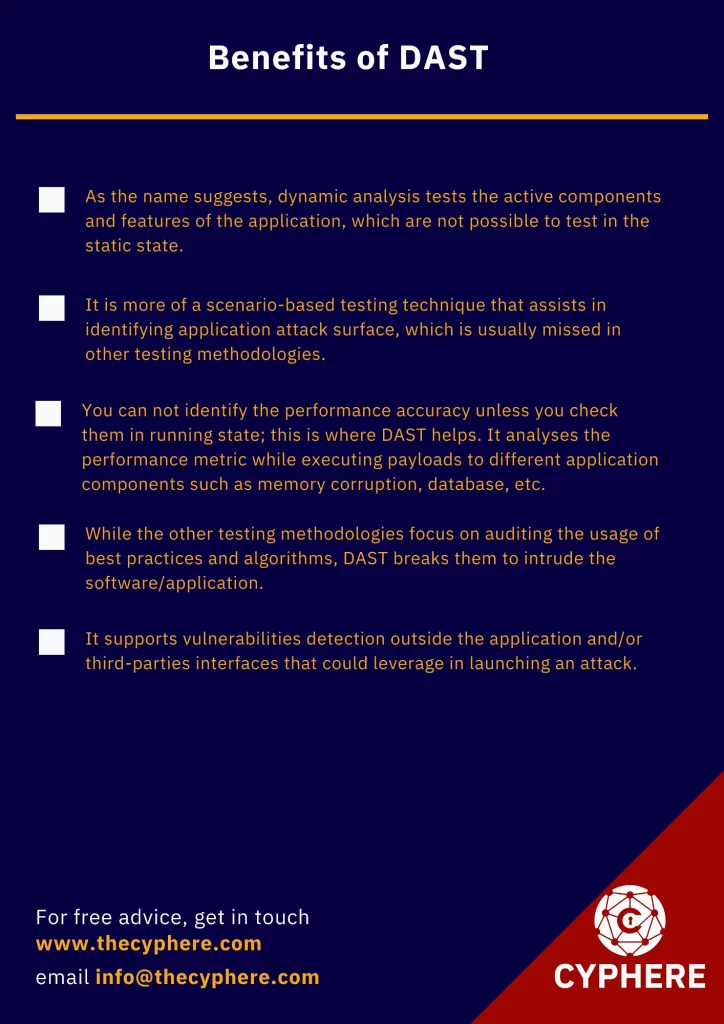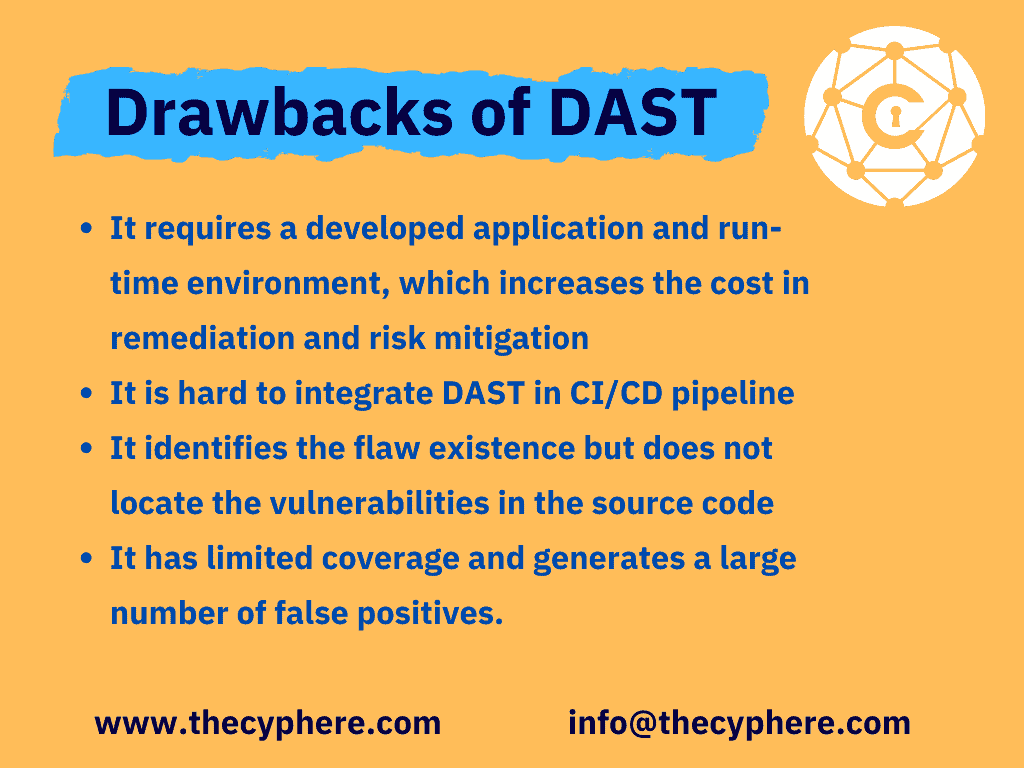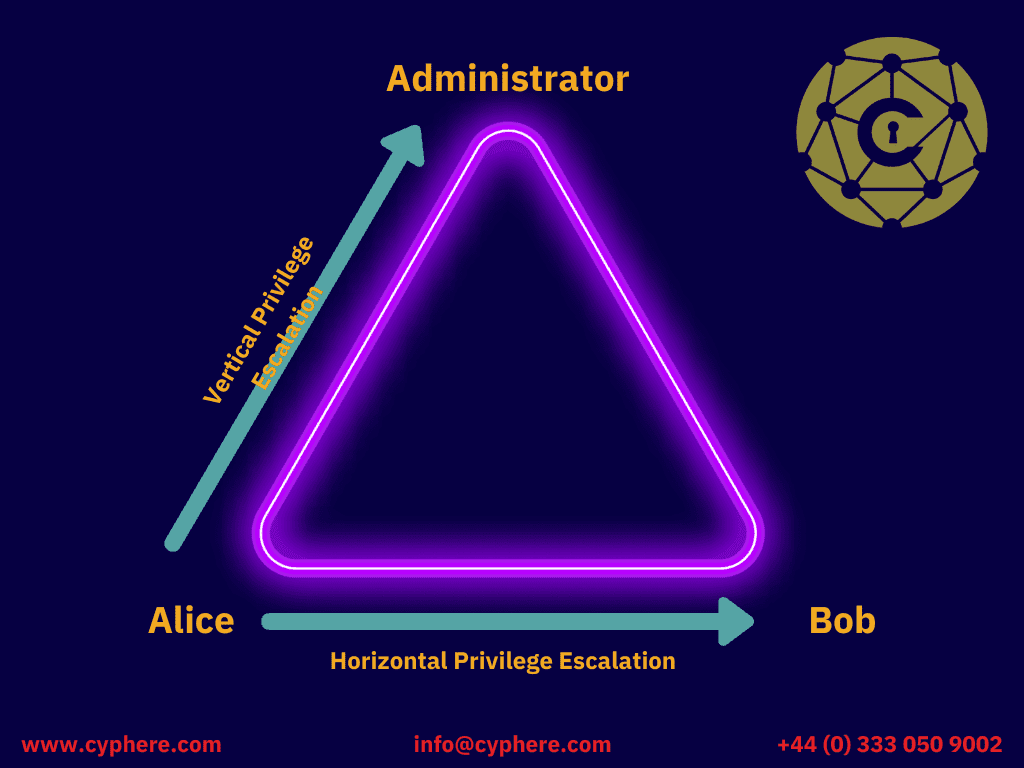
To keep up with the ever-evolving cyber threat landscape, application security is a big challenge. Unfortunately, security is often overlooked in the modern software development and delivery framework and assumed to be a luxury. Rather than taking a proactive approach, security is incorporated as a reactive approach that increases costs and makes the company suffer losses.
The security coding and code review practices incorporate security well, but these two can not cope with modern attack tactics. However, suppose some effort is taken in terms of application security testing while designing and developing the application. In that case, businesses can ensure their product is secure and resilient enough to hold their ground in the worst cyber cases.
The cyber security industry offers various security testing through multiple approaches. Application pen testing is one way to incorporate security best practices within the application development lifecycle that helps mitigate the threats within the SDLC timeframe. Of course, implementing security is itself a struggle, but here is a way to security test your software/application. That is “Dynamic Application Security Testing” which you can integrate with your application once it is developed and ready for quality assurance.
This article shed light on several automated testing solutions, such as SAST, DAST and IAST, that help developers and security testers identify vulnerabilities in their code at different SDLC stages. It also covers the important aspect of dynamic application security testing, focuses on its necessity, and compares it to other application security testing methods.
What is dynamic application security testing (DAST)?
Dynamic application security testing, commonly known as DAST, is a methodology that reveals security vulnerabilities, designs, and code defects in web applications in a run-time environment. DAST is a black-box security testing procedure in which applications are tested without prior internal information, such as script languages, framework, application architecture, etc. A DAST tool looks out for multiple flaws beyond the code level vulnerabilities that facilitate identifying configuration errors, third-party integration mistakes, microservices, API vulnerabilities, etc.
In dynamic application testing, the tester examines the web applications in their running state. It assesses the potential gaps and vulnerabilities with the threat actor mindset to crack the application security. The application is thoroughly examined from the outside environment in DAST and tested against the new development criteria such as authentication, GraphQL backing, HTTP, Rest API, and other requirements.
All application features and components are tested in the pipeline through DAST tools’ simulated attack vector with the pre-defined user inputs to observe the response and functionalities.
As everything comes with pros and cons, dynamic security testing has some benefits and drawbacks.
DAST vs penetration testing
As it says in the same, DAST relies on a dynamic approach to testing that requires no minimal human intervention. On the other hand, penetration testing involves a manual approach to test for cases where tools give up. The example test cases where DAST differs from penetration testing include business logic, exploitation and post-exploitation phases.
Benefits of DAST

- As the name suggests, dynamic analysis tests the active components and features of the application, which are impossible to try in the static state.
- It is more of a scenario-based testing technique that assists in identifying application attack surface, which is usually missed in other testing methodologies.
- You can not identify the performance accuracy unless you check them in a running state; this is where DAST helps. It analyses the performance metric while executing payloads to different application components such as memory corruption, database, etc.
- While the other testing methodologies focus on auditing the usage of best practices and algorithms, DAST breaks them to intrude on the software/application.
- It supports vulnerabilities detection outside the application and third-parties interfaces that could be leveraged in launching an attack.
Drawbacks of DAST

Dynamic application testing (DAST) offers a real-world scenario and attack surface identification but comes at some of the following drawbacks:
- It requires a developed application and run-time environment, which increases the cost of remediation and risk mitigation
- It is hard to integrate DAST in the CI/CD pipeline
- It identifies the flaw existence but does not locate the vulnerabilities in the source code
- It has limited coverage and generates a large number of false positives.
Why Is DAST Important?
Despite the critical drawbacks, the dynamic analysis holds a firm ground for security and quality assurance. Knowing your developer’s secure coding practice is a plus point and reduces security weaknesses. But as no one dose of vaccination could boost immunity against common cyber attacks, you must detect real-world vulnerabilities by real-world attack simulation. For that, DAST is very important.
To make your application resilient, you must test them from the attacker’s perspective; DAST offers a wide variety of software testing, including memory corruption, cross-site request forgery (CSRF), cross-site scripting (XSS), SQL injection, encryption, authentication, IDOR, API attacks and much more. Of course, the dynamic analysis’s effectiveness depends on how often the test is performed and how well the scanner studies the application. Still, whatever the case, DAST effectively investigates applications from an attacker’s perspective.
With the DAST, you can remove the open source web application software project (OWASP) top 10 risks, which are also valuable to attackers in penetrating the running application. In addition, this testing allows us to test the application’s internal health through the response and determine the external application environment, connected physical or virtual resources like web services, API endpoints, host systems such as networks endpoint, and other components your application is linked to.
What is static application security testing (SAST)?
Static application security testing, famous as SAST, is another approach to testing and validating application security. Unlike DAST, SAST is used as a white box testing- which means the testers already have access to the entire application architecture, codes, design, etc., which helps them analyse the application documents, source code, binaries, byte code, framework, design, and functionalities to detect security vulnerabilities.
The SAST examines the application source code to investigate how the application is scripted to identify vulnerabilities and suspicious behaviour. In addition, it looks for application source code flaws that can potentially be abused. SAST tools evaluate the application against a range of known-unknown vulnerabilities with their exact location, including the file name and line number along with the severity, impact, and description. A variety of SAST tools available in the market are easily integrable into the CI/CD pipeline.
What is interactive application security testing (IAST)?
Interactive application security testing (IAST) is a hybrid testing solution that complements both SAST and DAST. It helps the application identify vulnerabilities and mitigate associated risks within the SDLC. IAST detects security vulnerabilities, analyse source code, memory flaws, data flow while the application is running.
It overcomes DAST and SAST drawbacks and evaluates the application using black-box testing and internal application flow through software instrumentation. In addition, it leverages the DAST by its ability to be integrated with the CI/CD pipeline.
SAST vs DAST- The key differences
For robust applications against known unknown attack vectors, application security testing, i.e., SAST and DAST, is necessary. However, you can use them according to your requirements. Here are some of the critical analyses on the difference between SAST and DAST.
While the SAST is white-box testing and referred to as a development approach, it grants full access to the entire application/software inside out. On the other hand, the DAST is a black-box testing method. In it, the tester does not know the application background. Since every threat actors have a distinct approach and skill set, you never know how they would benefit from their application response. It wants you to test applications in the production context to identify potential flaws that could be exploited in a run-time environment.
The SAST evaluates various types of software, such as web app, mobile applications, embedded software, web service, thick clients etc., by testing its foundation, design and implementation. In contrast, DAST supports a limited type of applications such as web applications, web-services.
The SAST can be integrated into the earlier Software Development Lifecycle stage. It does not require you to run the application; it tells the weaknesses by simply understanding the source code, scripts functions and indicates the potentially vulnerable behaviour through that. Since you learned about the flaws in the earlier SDLC stage, it becomes easier to remediate them during the code writing phase.
But in comparison, the DAST is done in a real-time environment; it requires a functional application and starts once the development is completed, i.e., at the end of the SDLC stage, which eventually increases the time and cost for remediation.
How do DAST Tools work?
The DAST tools use sophisticated scans and tactics with minimal user interaction to detect potential vulnerabilities in query strings (GET/POST/PUT) responses and assess how the application functionalities are susceptible to potential attack vectors. The DAST tools are automated scanners that act as a proxy between application and user; in essence, it studies the application behaviour by generating traffic and learning response patterns.
Once the DAST tool learns all the application design and architecture by visiting and extracting web pages, all you have to do is define input and output to the tools then it begins with sending requests.
When the inputs are defined and the scan starts, the tool examines each input’s output. It detects deviations from the expected result set and reports false positives and negatives. Since the tool has no prior knowledge of application frameworks and in which context it works, it usually generates lots of false-positive and issues related to third-party libraries and components.
As no solution or strategy could work for every business, SAST, DAST, or IAST is not the single solution to answer your security risks. Instead, you must use them according to your needs, as they all serve different purposes. For example, as an initial defence line, you may use SAST to cross-check your secure coding practice, but you can scan with DAST for more robust security and assure you build a secure application.
Get in touch with us to discuss your application security concerns. Either you want black box DAST or white box SAST; we got you covered with everything. Our consultancy helps companies choose budget-friendly and suitable security testing processes according to their compliance and business requirements.
Shahrukh, is a passionate cyber security analyst and researcher who loves to write technical blogs on different cyber security topics. He holds a Masters degree in Information Security, an OSCP and has a strong technical skillset in offensive security.












